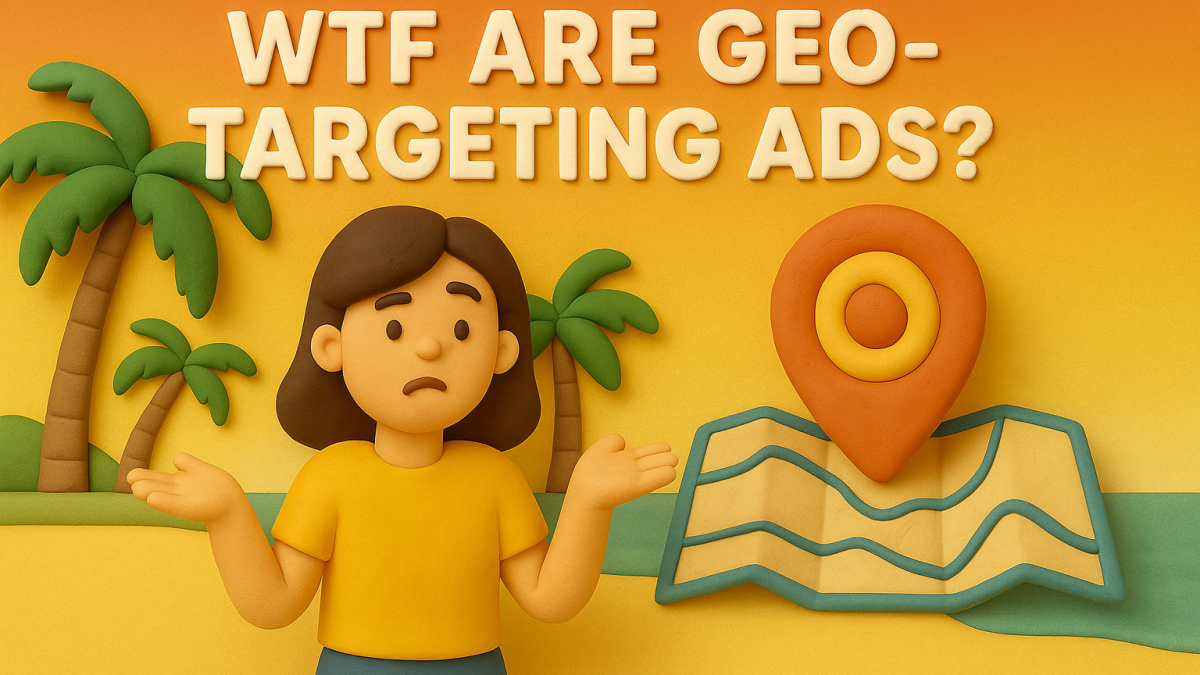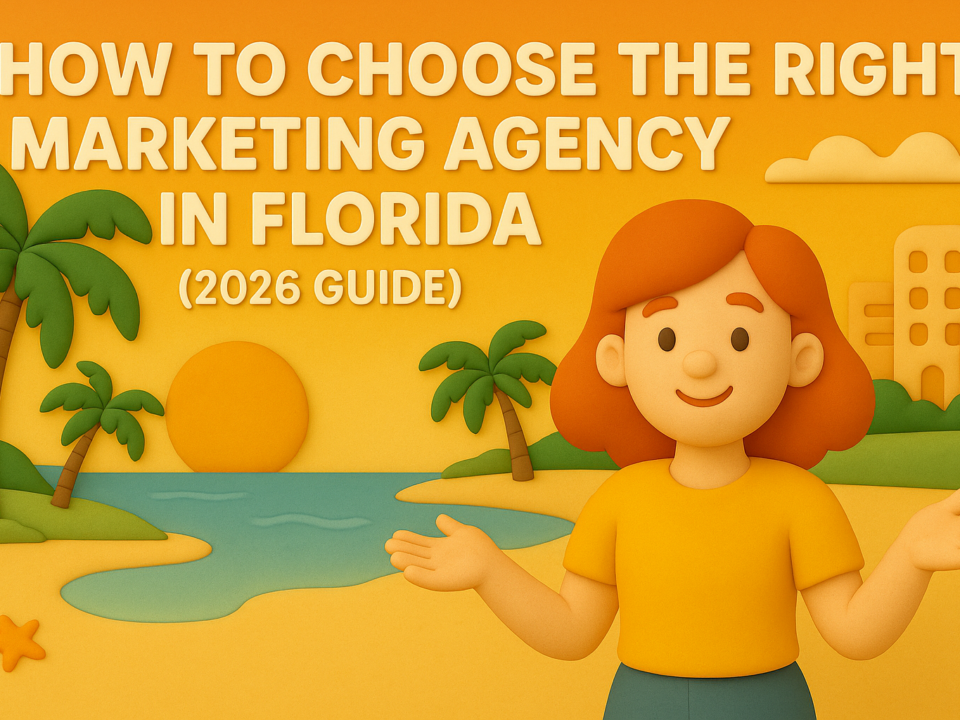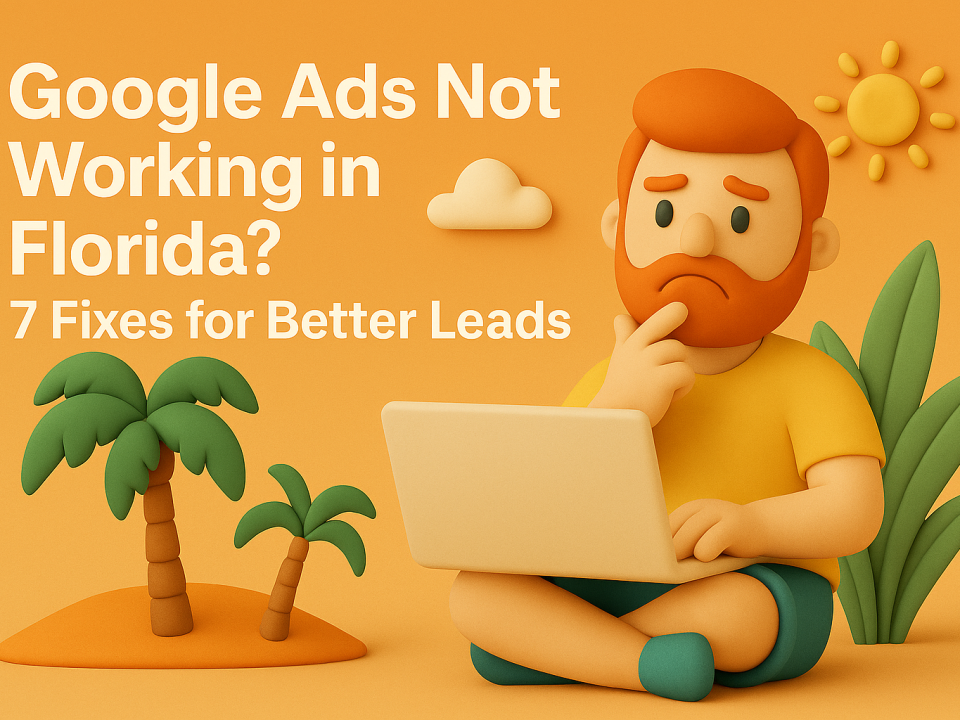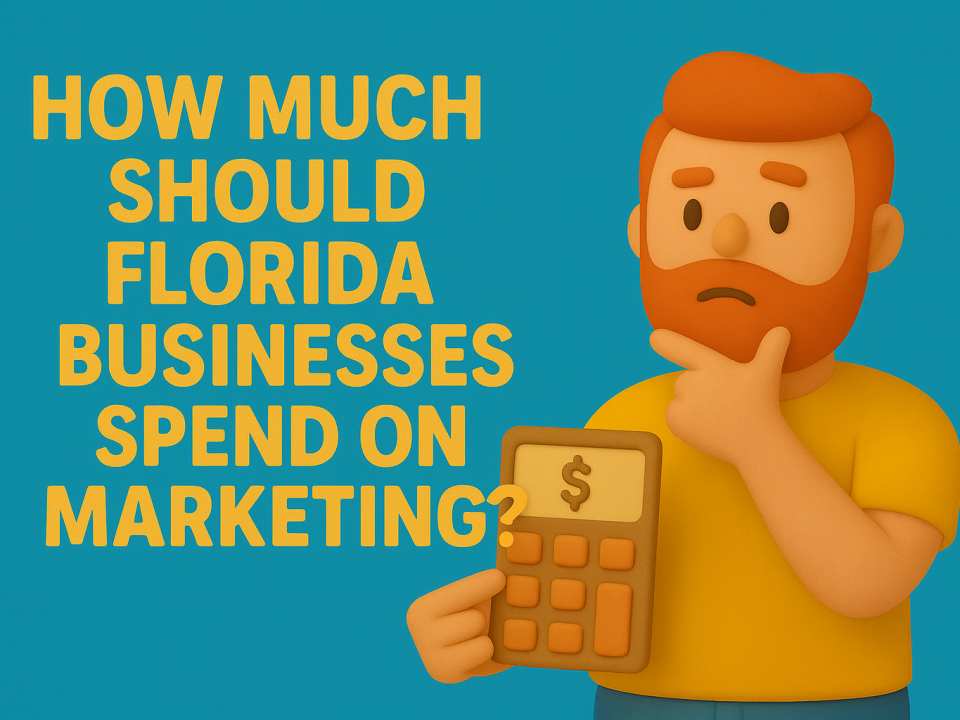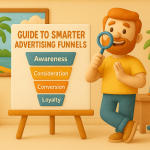
South Florida’s Guide to Smarter Digital Ad Funnels
August 21, 2025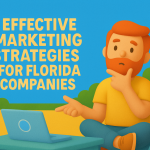
Effective Marketing Strategies for Florida Companies
September 1, 2025🎯 WTF Are Geo-Targeting Ads? What Every Business Should Know
In this post, we’ll answer the burning questions: What exactly is geo-target marketing? How does it work? What are the benefits? We’ll also share examples of strategies and use cases across different ad platforms.
For starters, “geo” stands for geography. Geo-targeting simply means you can serve ads to a specific country, state, city, zip code, or even an address radius. In digital marketing we often call this hyper-local marketing. Think of Chick-fil-A running drive-thru campaigns within five miles of their locations to drive sales from nearby residents and workers.
Below, we’ll walk through how platforms like Meta, Google, Spotify, and TikTok execute geo-targeting and give you real world examples for each.
⚡ TL;DR: Geo-Targeting Made Simple
- Geo-targeting = location-based ads that reach people by state, county, city, zip code, or address radius.
- Meta Ads: Best for full-funnel campaigns (awareness → conversions).
- Google PPC: Great for capturing high intent leads searching “near me.”
- Spotify Ads: Build awareness with commuters and niche local audiences.
- TikTok Ads: Similar targeting to Meta, but content is king.
- Key takeaway: Test, layer, and optimize strategies across platforms. Geo-targeting is about precision, not waste.
Want to skip the 3 minute (highly valuable) read & talk to an expert? 👉 Book your free strategy session now
📌 Meta Ads: Geo-Targeting Across the Full Funnel
Meta (Facebook & Instagram) is what we call a full-funnel channel, great for building awareness, driving consideration, and closing conversions. Unlike a billboard, which only builds brand awareness, Meta lets you layer creative, targeting, and data to hit multiple funnel stages.
When setting up a campaign, you’ll reach a location section where you can go broad or hyper local. Options include:
- State of Florida targeting – A personal injury law firm could target the entire state to capture cases statewide. As leads come in, campaigns can be narrowed to the best performing regions. We utilized this targeting strategy at the beginning of our campaigns for our immigration attorney, then scaled down to high performing cities.
- County targeting – Example: Broward County using ads to boost voter turnout by showing polling times and locations.
- City targeting – A Fort Lauderdale plumbing company targeting the city radius with messaging like “Fort Lauderdale Emergency Plumbing Experts 25 Years Experience.”
- Zip code targeting – Real estate agents layering digital ads on top of door knocking and mailers to dominate their farm neighborhoods.
- Address targeting – A Las Olas Blvd restaurant setting a 3-mile radius campaign for walkable lunch and dinner traffic.
👉 These examples are just starting points. In reality, strategies mix and match depending on business goals and customer behavior.
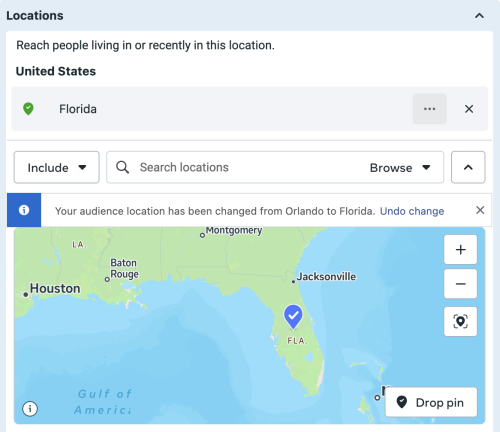
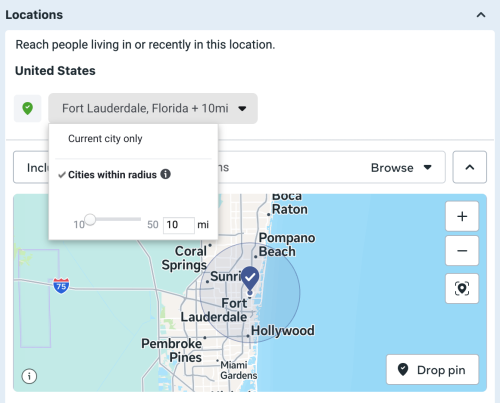
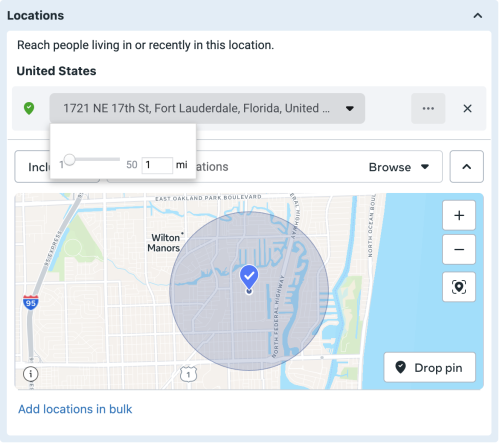
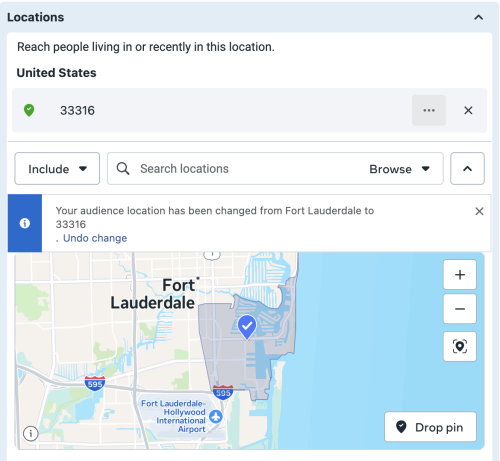
🔎 Google Ads: High-Intent Local Targeting
Google Ads (especially PPC) shine in the lower funnel where conversions happen. The platform supports the same geographic layers as Meta, but the difference is intent: people are actively searching.
Examples:
- Statewide targeting – A franchise or insurance provider could scale awareness across Florida while still layering in local campaigns.
- County targeting – A bakery serving retailers across Palm Beach County could target searches like “wholesale bakeries near me” to land supply contracts.
- City targeting – Keywords like “Boca Raton plumbers” or “family law firm Boca Raton” drive high-intent leads for service businesses.
- Zip code targeting – A luxury landscaping business bidding only in Delray Beach’s 33483 zip code to reach affluent homeowners.
- Address targeting – A Delray retail boutique targeting shoppers near Atlantic Avenue with ads for holiday sales.
📌 Key insight: PPC campaigns capture a high intent audience. When someone types “food near me”, they’re not browsing, they’re ready to buy.

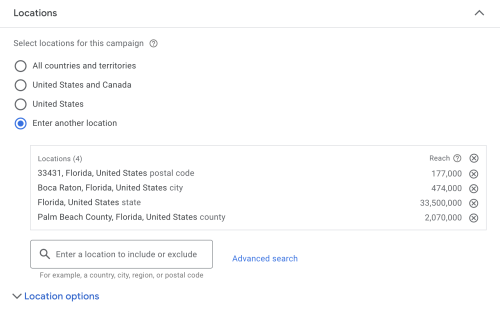
🎵 Spotify Ads: Awareness That Sticks
Spotify ads aren’t as granular as Meta or Google, but they’re powerful for awareness, especially in commuter heavy areas.
Examples:
- Statewide targeting – Insurance companies scaling campaigns across Florida to build recall before renewal season.
- City targeting – A Miami law firm layering Spotify audio with Meta ads, ensuring commuters hear their name while scrolling or driving. Actually, see one in action from our case study with Papas Tapas in Delray Beach
- Zip code targeting – A new Brickell gym launching with a “use code MUSIC for your first class free” offer in targeted neighborhoods.
Spotify works best as an awareness layer when paired with lower funnel channels like Meta and Google.
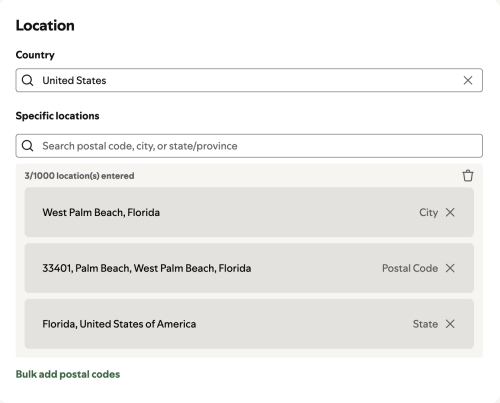
📱 TikTok Ads: Creative at Scale
TikTok shares many of the same geo-targeting features as Meta, but with two big differences:
- TikTok’s strength is creative, it demands short, authentic, scroll stopping content.
- TikTok doesn’t allow address radius targeting.
Still, its reach and cultural pull make it a smart addition for local service businesses and e-commerce brands alike.
🚀 Wrapping It Up
Geo-targeting is crucial for local service based businesses. Just watch some of the video on our Instagram where we call out broad targeting mistakes that waste businesses money. Whether you’re running address radius campaigns on Meta, keyword targeted PPC on Google, or awareness building on Spotify, the key is layering strategies that align with your business goals.
Test, measure, and optimize, then expand once you’ve found what resonates.
✨ If you’d like expert eyes on your campaigns, our team at J. Oliver Advertising can help turn insights into results. 👉 Book your free strategy session now
J. Oliver Advertising
📈 Scaling Smarter Starts Here!
📸 Instagram
⭐️ 5 Star Reviews
❓ 10 FAQs About Geo-Targeting Ads
- What is geo-targeting in advertising?
Geo-targeting is the practice of delivering ads based on a person’s location—anything from a state to a one-mile radius around a specific address. - Why is geo-targeting important for local businesses?
It reduces wasted ad spend by reaching only the people most likely to visit, call, or buy from you in your service area. - What’s the difference between geo-targeting and geofencing?
Geo-targeting serves ads within a broad location (like a city). Geofencing sets up a “virtual fence” around a specific area, triggering ads when someone enters it. - Which platforms offer geo-targeting?
Major ad platforms—Meta (Facebook/Instagram), Google Ads, TikTok, Spotify, LinkedIn, and programmatic display networks—all have location-based targeting features. - How specific can geo-targeting get?
You can target entire countries or zoom in to a one-mile radius around a business address. On Meta, for example, you can choose cities, counties, zip codes, or custom radiuses. - Does geo-targeting work for service businesses?
Yes—plumbers, attorneys, landscapers, and restaurants often rely on geo-targeting to focus on the neighborhoods they serve. - How does geo-targeting help with ROI?
By focusing ads on the right geographic audience, you avoid paying for clicks or impressions from people outside your service area. - Can geo-targeting be combined with other targeting methods?
Absolutely. Businesses often layer geography with demographics, interests, or behaviors to build hyper-relevant campaigns. - Are there limitations to geo-targeting?
Yes. Some platforms restrict targeting down to 10 miles (Meta city campaigns) or don’t allow exact address targeting (TikTok). Plus, hyper-narrow targeting may limit reach. - How do I know if my geo-targeting is working?
Track KPIs like click-through rate (CTR), cost per lead (CPL), and conversion rate by location. Many platforms also offer location breakdown reports so you can double down where performance is strongest.

